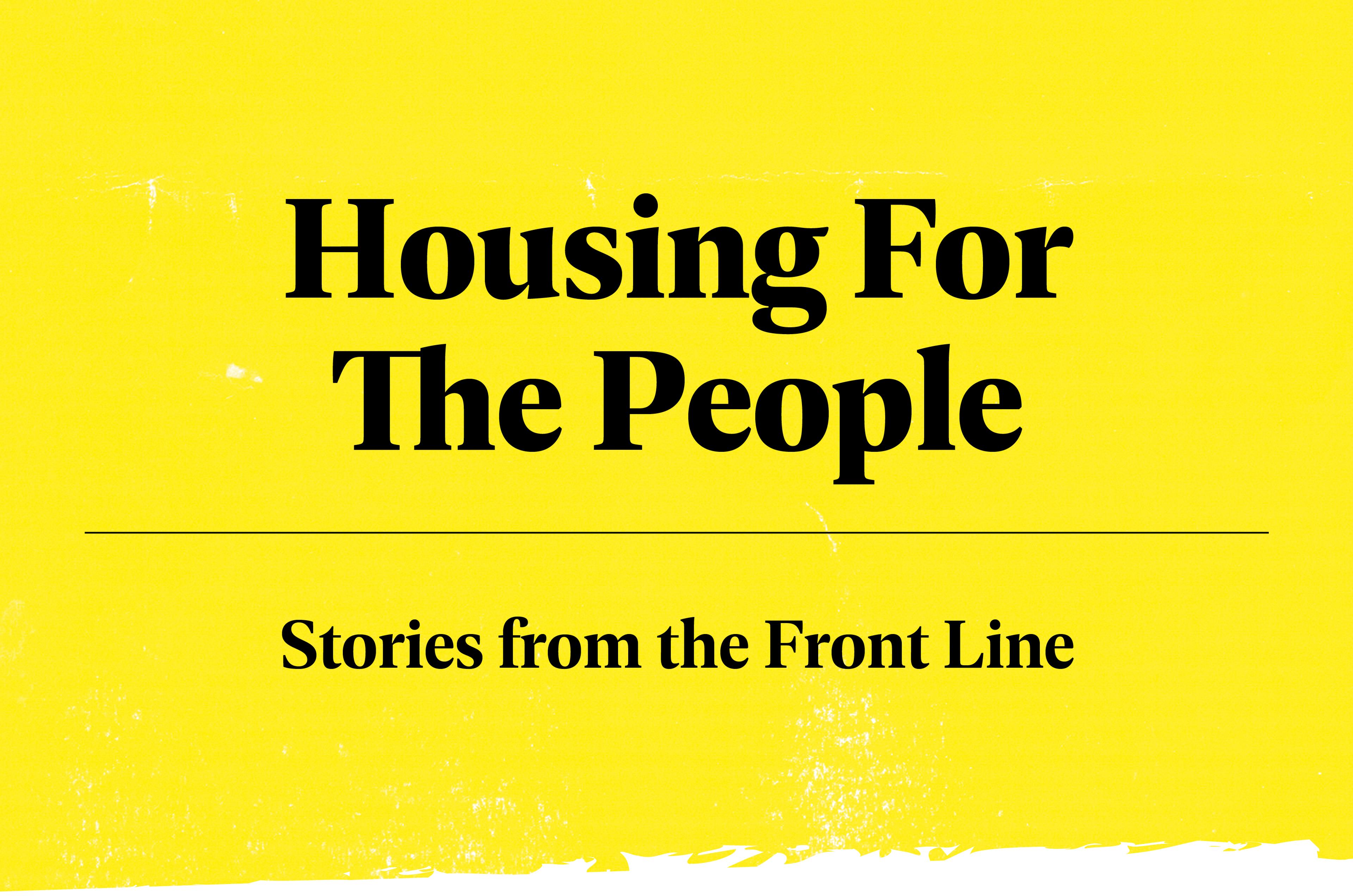Housing for the People: “We got into our new apartment right before Christmas – it was the best gift!”

By Mindy Woods
- Lived experience
Mindy Woods and her son were forced to leave their dilapidated and mold infested home when it began to affect their health. Their experience thereafter is a story of lows – navigating the Kafkaesque public housing and benefits rigmarole, facing up to the “embarrassment” of having to tell her son’s teachers they were homeless – but also the high of finally getting a place to call home. A tireless housing and social justice advocate, Mindy shares her story here – as part of INSP’s new ‘Housing for the People’ column – to affect public perception and create policy change.
Shame. Overwhelmed. Embarrassment. Humiliation. Anxiety. Fear. Grief. These emotions are just some of what we were feeling every day in 2011 when we lost our apartment and became homeless.
It is our job as parents to protect our children, but I could not fulfill my duty. My son and I lived in an apartment, and unbeknownst to us, black mold growing in the walls was slowly poisoning us. After months of illness, my son got hospitalized with fungus growing in his esophagus. My son has Type 1 Diabetes, and I had been diagnosed with multiple auto-immune diseases myself. The secondary black mold poisoning had significantly compounded our health issues, and I knew we could no longer stay in our home. So, we packed up what items we could salvage and evacuated. We had to leave behind all our furniture and anything else that had mold spores on it.
We had no family in the area, and I was too humiliated to tell my closest friends what was happening. For some reason, letting a couple of acquaintances know that we were “in transition” seemed more palatable than admitting I could not keep a roof over our heads. So, we stayed on a couch, a floor, and a futon of these two sets of friends in two different cities for four months while we waited to have an intake appointment at the only shelter in our local region.
On the first school day after staying the weekend at one of the homes, I dropped my son off at the front door of the building and told him I would find us a stable place by the time school was out. I kissed him goodbye, then pulled around to the back parking lot and parked in the spot farthest from the building so nobody would see me. The house we were “couch surfing” in was 30 minutes away, and I couldn’t afford to drive back and forth twice a day. I also naively thought I could make a couple of calls and find either a shelter to take us in or a program to help us get into a new apartment. I had no idea how wrong I was.
I lowered my seat so I wouldn’t be seen and pulled out my pre-paid cell phone. I was still waiting to receive Social Security Disability, so I had no money for anything other than the bare necessities, including a cell phone plan, so I had to use my minutes wisely. I spent the day calling over 50 organizations and agencies looking for help, but none of them had funding left or space to take us in. I pulled back up to the front of the building at the end of the school day to pick my son up, feeling defeated and in shock that this was our reality. I swallowed the lump in my throat, blinked back the tears, and told my son things were taking a little longer than expected. Then we made the 30-minute trek back to our friend’s house.
Four months later during the intake appointment, I was told there was no space in the homeless shelter, so we were put in a motel for six weeks while waiting for a room to become available. The school year had just started, and I was doing everything I could to make our stay seem like we were on vacation, all while keeping our situation a secret.
I heard many different stories of what led the families to lose their homes. Domestic violence, job loss, divorce, and medical issues were the most common, and of course, lack of affordable rentals. And in each story, and on each face, there was pain and trauma.
One morning as we were leaving our room to take my son to school, we heard another door close. When we looked over, we were horrified to see my son’s friend and his dad leaving their room. They looked as embarrassed as we felt, and when I asked why they were there, the dad said they had lost their home when the wife became sick and lost her job. That is the day I realized that homelessness could happen to anyone, for any reason, at any time. When we got to the school, I parked my car, took a deep breath, and went inside to let the staff know what was going on. To my surprise, they had a Homeless Liaison on staff, because there was a need.
After six weeks in the motel, we finally got a room at the shelter. We stayed there for three and a half months, where we met several other moms and their kids. I heard many different stories of what led the families to lose their homes. Domestic violence, job loss, divorce, and medical issues were the most common, and of course, lack of affordable rentals. And in each story, and on each face, there was pain and trauma.
We got into our new apartment right before Christmas, and it was the best gift! We quickly set up our home and got my son transferred to his new school. We were finally getting our life back on track. I completed the 18-month housing program we were in through the shelter, and then received a Section 8 Rental Assistance voucher. We could finally breathe again.
Today my son and I are both stable tenants, but the emotional toll of our journey is still with us. Given the high cost of housing, as renters, we never feel totally secure. At any given moment, the next rent increase, or any number of other reasons, could put us at risk of losing our stability and experiencing homelessness all over again. It’s something that’s always on my mind. We all want to maintain a safe place to live for our families. As the old saying goes, there really is no place like home.
Mindy Woods is a Gulf War Navy veteran, a single mother, and has experienced homelessness twice in the last 10 years. She serves on multiple boards and commissions and is a founding member of the Resident Action Project in Washington state. She is a tireless housing and social justice advocate and shares her story to affect public perception and create policy change.
Housing for the People is a column produced by the International Network of Street Papers from people on the frontlines of the housing justice movement in America and beyond.
Courtesy of INSP North America / International Network of Street Papers
